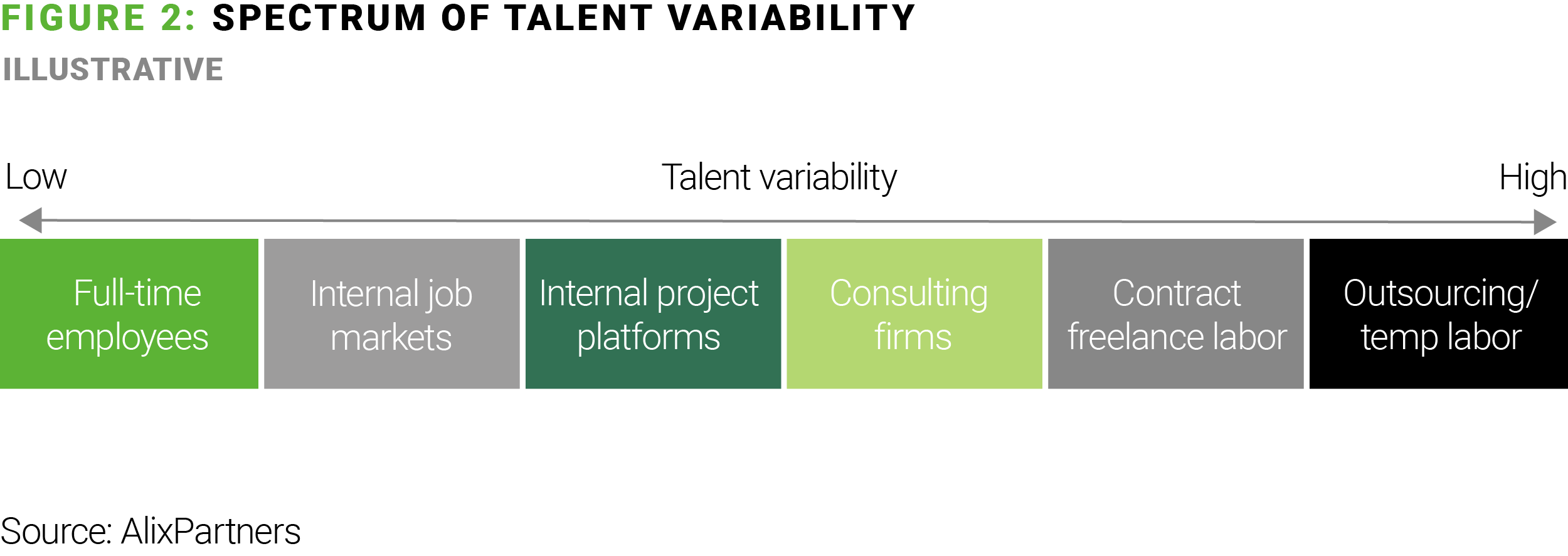Making 2023 the year of SWFP doesn't have to be a Sisyphean task - here are some best practices to get you jumpstarted with confidence
In our previous two articles on Strategic Workforce Planning - we provided an overview of the good and bad sides of implementing SWFP, while also highlighting some of the common pitfalls we see our clients encounter as they try to implement SWFP. While it's often easier to describe what not to do, our time working hand-in-glove with our clients has also given us a portfolio of best practices and ideas that we've observed and want to share as a capstone to this article series.
Data is Important, but Data Interpretation is Critical
At the end of the day, SWFP is about ensuring that your organization has the requisite talent needed to execute its strategic imperatives (thus "strategic" versus "staffing"). Of course, data is a priority commodity to power these decisions - without the ability to collect trends like market demand for skills, wage competitiveness, and internal attrition rates, workforce planning is about as effective as throwing a dart at the board. But even more important than having the right types of talent data, is knowing how to use that data. The clients we've observed with the highest SWFP maturity are skilled in leveraging their available talent data pools to make refined forecasts versus "guesstimates", in concert with their BU leads, Finance, and any other major stakeholders. Even a relatively simple 2x2 framework (see below) can help CHROs and their HR teams plot workforce roles to have educated talent conversations.

Shaping the available data even in relatively scaled-down visualizations and frameworks can help stakeholders outside of HR to think through their true talent requirements and priorities. This can lead to more productive and fruitful review sessions with clear objectives memorialized.
Push for Annual Productivity Improvement
One challenge we typically see in both growth and more stable top-line companies is the creeping up of labor costs as a percentage of year-over-year revenue. As CHROs lay out their process for SWFP, leading-edge practitioners think about pushing teams to increase year-over-year productivity to free up capacity to fund incremental resources, particularly in support function areas.
The HR teams should work with department leaders to lay out specific productivity improvement initiatives that will free up labor capacity throughout the year and include that capacity in the overall workforce plan.
Seek to Responsibly Variabilize Fixed Costs
As CHROs and their organizations face recessionary headwinds, it's even more critical for SWFP stakeholders to consider the full spectrum of available labor. Remember, SWFP is ultimately about putting the right talent in the right areas to achieve strategic priorities - that talent doesn't necessarily have to be full-time employees.
One of the main considerations when weighing the use of variable vs. fixed labor is how stable the demand is for the services the team is performing. For example, if there is a step-change in demand during certain times of the year or demand seasonality, you may consider leveraging variable labor during those peaks.
Regarding types of variable labor, the illustration below lays out a wide range of talent segments and channels CHROs can pursue that could deliver the required skills and resources to achieve strategic initiatives while introducing additional variability into otherwise fixed cost structures.

Conclusion
Many of the organizations that we have worked with have found that traditional talent-staffing models, established decades ago and rarely evolved, no longer work in a fast-paced, complex business environment. These teams are looking to build proactive measures and flexibility into how they accurately ingest and deploy talent to where it is most strategically needed, at the lowest feasible cost. Strategic workforce planning, when programmatically executed and supported across the business, delivers tangible value to companies as they confront the disruptions of 2023 and beyond.
This is the last of three articles about recession-readiness best practices. The other articles in the series are “CHROs: Make 2023 the Year of Strategic Workforce Planning (Part 1 of 3)”, and “CHROs: Make 2023 the Year of Strategic Workforce Planning (Part 2 of 3)”. We hope you enjoyed this series, please reach out to continue the conversation.

/Passle/5e1358328313d50770039d23/MediaLibrary/Images/6093fd71e5416b04ac4aebca/2024-01-09-14-29-41-938-659d5855146256acfd0a0c9b.jpg)
/Passle/5e1358328313d50770039d23/SearchServiceImages/2024-04-15-16-38-16-652-661d57f8de10b4f02f3aa40e.jpg)
/Passle/5e1358328313d50770039d23/SearchServiceImages/2024-04-12-16-17-48-509-66195eac694683487748f816.jpg)
/Passle/5e1358328313d50770039d23/MediaLibrary/Images/2024-04-12-12-50-21-587-66192e0d6f7e5660a5bf3ea0.png)